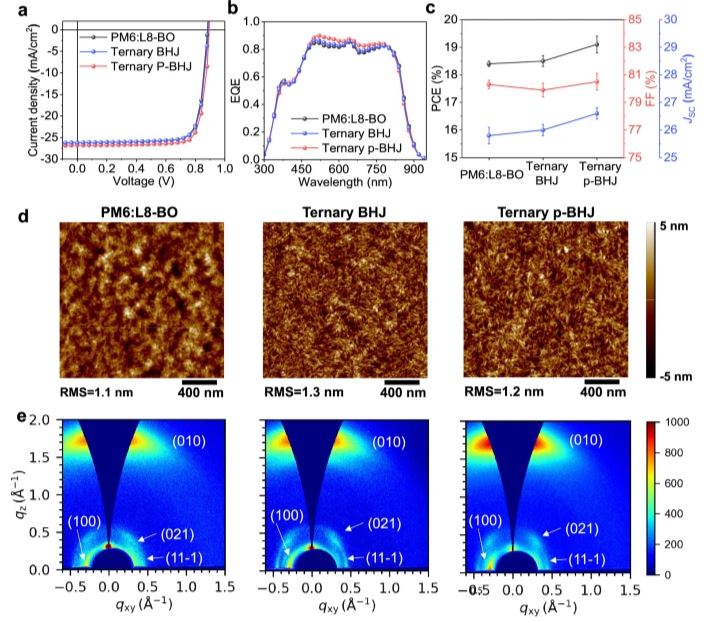Photovoltaic performance and morphology of photoactive layers
Image: Wuhan University of Technology, nature communication, Common License CC BY 4.0
A team of scientists from Wuhan University of Technology in China improved the energy conversion efficiency of an organic solar cell after fabricating a device using a newly designed non-fullerene acceptor.
In the research paper “Molecular interaction induced double fibrils to organic solar cells with a certified efficiency of more than 20%”, published in the magazine nature communication, The researchers say that improving the structural orders and optimizing the nanoscale morphology of organic semiconductors will play a crucial role in achieving high efficiency of organic solar cells.
To test the theory, the scientists designed and synthesized a new non-fullerene acceptor, L8-ThCl, that would serve as a third component alongside a PM6:L8-BO host system. They say adding L8-ThCl helped enlarge and define the nanofibrils from polymer donors.
“We found that the well-ordered PM6 side chains can be rotated into a face-on orientation by the dipole-dipole interaction with L8-ThCl, and refined into nanofibrils with enhanced and denser π−π stacks ”, the scientists explain in the paper. “Meanwhile, the good miscibility and intermolecular interactions between L8-BO and L8-ThCl in W- and S-shaped packed dimers can effectively strengthen and regulate the packing networks of acceptors into one-dimensional fibrils with high crystallinity.”
During testing, the team fabricated two devices – PM6:L8-ThCl/L8-BO:L8-ThCl and D18:L8-ThCl/L8-BO:L8-ThCl – each registering a significantly higher efficiency of 19.4% and 20.1% respectively.
The latter’s PCE was certified at 20%, which the scientists say is the highest certified efficiency reported to date for single-junction organic solar cells.
In the paper’s conclusion, the scientists say the strategy “provides an encouraging prospect of molecular aggregation engineering of organic semiconductors to surpass the milestone 20% efficiency of organic solar cells.”
Earlier this year, a research team from Wuhan University of Technology and Central South University fabricated an ultra-thin organic solar cell with a double-layer hole transport layer that achieved an efficiency of 17%.
This content is copyrighted and may not be reused. If you would like to collaborate with us and reuse some of our content, please contact: editors@pv-magazine.com.
Popular content



